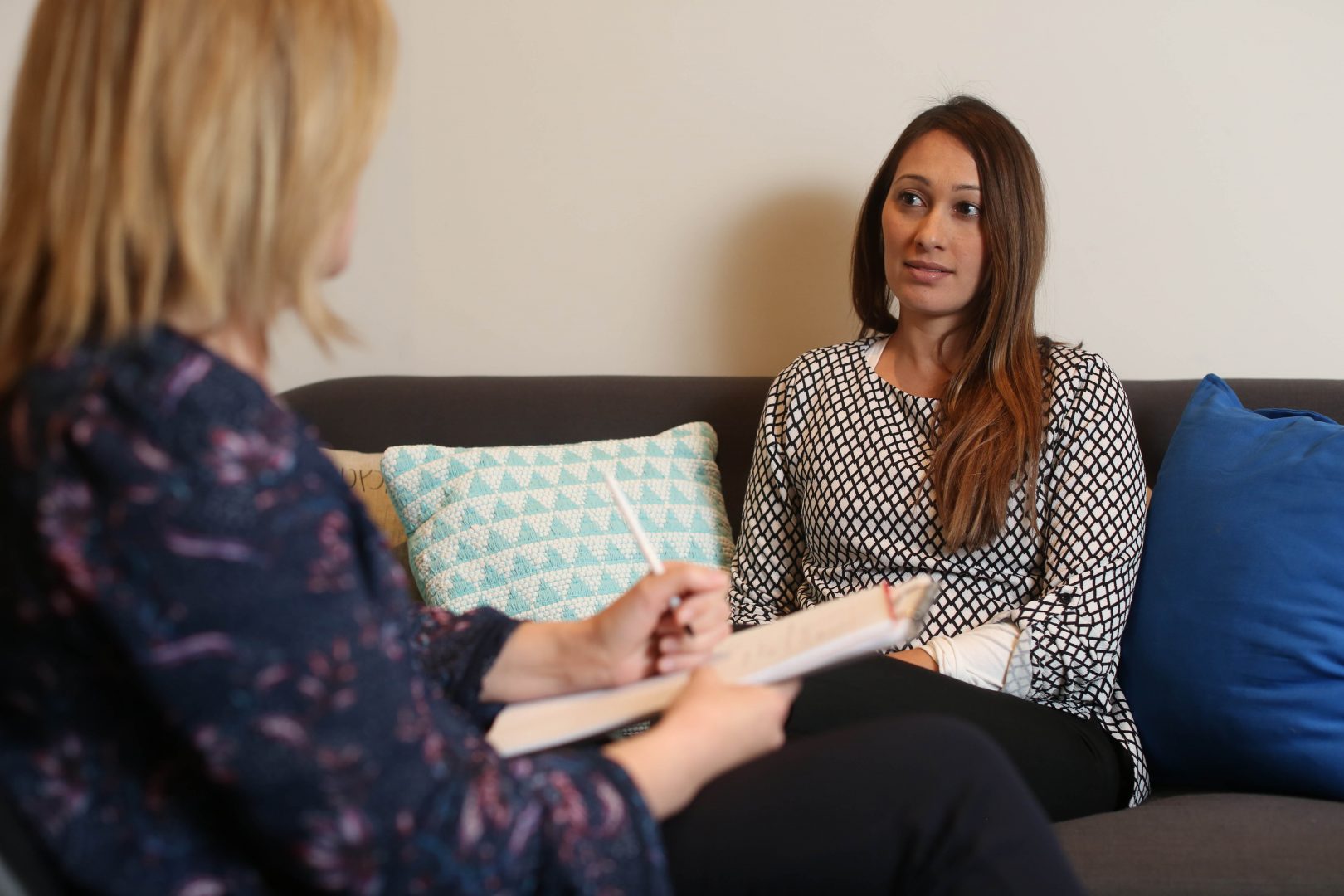Meditation is a topic that has recently received a great deal of attention for its benefits, especially those pertaining to mental health. Historically, meditation was considered to be an alternative health care practice originating in the East. However, with the advent of programs incorporating meditation such as Mindfulness Based Stress Reduction by Jon Kabat-Zin and subsequent scientific studies, there is now a large body of research to support its health benefits. Currently, it is common to find meditation courses in hospitals, psychology practices, rehabilitation clinics and other multi-disciplinary facilities.
Despite the rising popularity of meditation a lot of confusion still exists. Common questions include: How do I meditate and does it work? What type of meditation should I practice? How long and how often should I practice for? What should I expect from a regular meditation practice? Meditation is simply a way of calming down the monkey mind observing thoughts, feelings, sensations without judgement. Historically, the monkey mind has kept us safe. Back in hunter gatherer days we needed scattered attention to survive, scanning the environment for predators. In modern western society we receive information through the internet, social media, television and other forms faster than our nervous system and brain can handle. The result often takes a toll on our mental health with conditions such as stress, anxiety and depression and on physical health with illness such as cancer and heart disease.
If you are new to meditation it can be helpful to try a few different styles to ascertain which method works best for you. There are many different styles of meditation usually classified by the way they focus attention. For example:
- Passive meditation (sitting in stillness where the focus point can be the breath or a single sound) All perceptions internal (thoughts, feelings, memory) or external (sounds, hearing, smell) are recognized and seen for what they are. The participant is encouraged to experience their perceptions in a non-reactive process from moment to moment. For example in breath meditation you are encouraged to pay attention to the breath. When you notice the mind wandering and thoughts arising you are encouraged to focus your attention back on your breath as a focus point. Eventually the mind is calmed by attention to the breath and the ability to focus attention becomes easier with practice.
- Active meditation (Using sound, guided meditation, walking meditation) For example, guided meditation involves a process where participants meditate in response to the guidance provided by a trained practitioner either in person or via a sound recording comprising of music or verbal instruction, or a combination of both. This type of meditation is ideal for visual learners or people who learn best through sight. In contrast, walking meditation is ideal for people who are typically restless and with high energy types or for people with injuries that prevent them from sitting comfortably. It involves slow walking paying attention to all five senses.
Some benefits of meditation include:
Emotional Wellbeing:
- Lessens worry, anxiety and impulsivity
- Lessens stress, fear, loneliness and depression
- Enhances self esteem and self acceptance
- Improves resilience against pain and adversity
- Increases optimism, relaxation and awareness
- Increases mental strength and focus
- Improve memory retention and recall
- Better decision making and problem solving
- Improves overall mood and emotional intelligence
Physical Wellbeing:
- Improves breathing and heart rate
- Reduces blood pressure
- More longevity
- Lessens asthma and inflammatory disorders
- Lessens premenstrual and menopausal syndrome
- Improves immune system and energy levels
So how does meditation work?
Firstly, meditation helps to switch from the stress response in the body (fight or flight), where the sympathetic nervous system (SNS) is activated, to the rest and digest response activating the parasympathetic nervous system (PNS). Our SNS helps us to respond to stress by speeding up our heart rate, constricting blood vessels, decreasing digestive activity, raising blood pressure and sending adrenaline throughout the body. The stress response prepares the body to fight or run which can be helpful if there is an actual emergency however, this often isn’t the case and often the stress response is activated where physical action is unnecessary. Prolonged stress can result in chronic supression of the immune and digestive systems and trigger anxiety and depression. The good news is we can learn to switch to the parasympathetic nervous system (PNS) by activating the vagus nerve, through meditation and slow breathing.
Secondly, our diaphragm is connected to a nerve group called the vagus nerve also known as the 10th cranial nerve. This nerve group connect to various parts of our system including the belly, the heart, the throat, and the end of the diaphragm. The main function of this nerve group is to active the PNS or we could say bodily functions leading to relaxation. When this nerve group is not active or well toned managing stress is extremely difficult. As we breathe deeply into the belly during meditation the range of motion increases in the diaphragm, which stimulates the vagus nerve sending a message to the brain to activate relaxation and calm. The vagus nerve is also connected to the heart. When we breathe into the belly and the vagus nerve is activated, one of the direct consequences is that the heart rate is slow down.
Thirdly, meditation positively influences heart rate variability (HRV) balancing the SNS and PNS. This important because steady, rhythmical fluctuations in heart rate and good heart rate variability are the basis of well being. When our autonomic nervous system (ANS) is well balanced, we have a reasonable degree of control over our response to minor frustrations and disappointments, enabling us to calmly assess what is going on when we feel insulted or left out. Effective arousal modulation gives control over our impulses and emotions. As long as we can stay calm we can choose how we want to respond. Individuals with poorly modulated ANS are easily thrown off balance, both mentally and physically. Since the ANS organises arousal in the body and the brain, poor HRV (that is a lack of fluctuation in heart rate in response to breathing)- not only has negative effects on thinking and feeling but also on how the body responds to stress. Lack of coherence between breathing and heart rate makes people vulnerable to a variety of physical illnesses such a heart disease but also mental health problems such as depression and PTSD.
Typically, most meditation techniques advocate a daily practice of least five minutes in the morning and evening, building up the duration of meditation over time. However, in the early stages of learning meditation, roadblocks can be common, with people reporting:
“My mind is always racing, so I can’t do it”
“I’ve tried to meditate and it didn’t work”
“It’s just too difficult”
“I don’t know what to do, just sit there?”
Regular practice with an experienced meditation teacher and attending group classes can be helpful to overcome these obstacles.
For further details on links to scientific articles on the benefits of meditation:
http://liveanddare.com/benefits-of-meditation/
YouTube Link Vagus Nerve https://www.youtube.com/watch?v=RpCdqoWRoD4&list=PLPSPqfuv_mRhpEhYr1kF0XWrRxrM8wLca
B. A. van der Kolk, et al., “Yoga as an adjunct treatment for PTSD.” Journal of Clinical Psychiatry 75, no. 6 (June 2014): 559-65
B. A van der Kolk The Body Keeps Score (Penguin: London, 2014)
P. Ogden, Trauma and the Body (New York: Norton, 2009).
I. Kabat Zinn, Full Catastrophe Living. How to Cope with Stress, Pain, and Illness using Mindfulness Meditation (Piatkus Books: London, 2013)
For regular meditation classes and training:
Author: Angela Curtis (Provisional Psychologist)
Email: angela@theresiliencecentre.com.au






